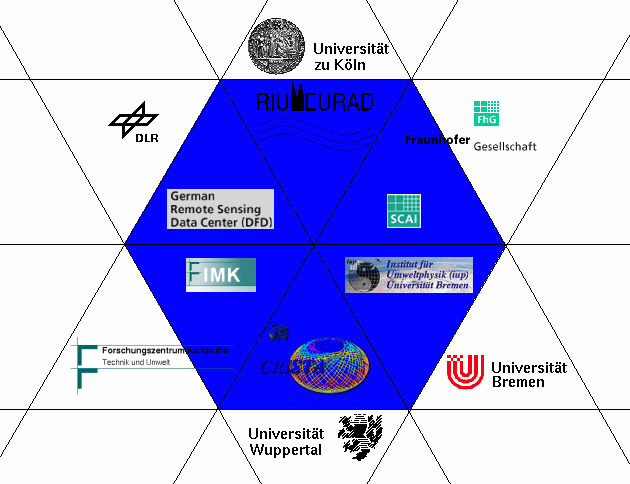Rheinisches Institut für Umweltforschung
Projekt EURAD
Aachener Straße 201-209
50931 Köln
Synoptic Analysis of Chemical constituents by Advanced Data Assimilation

Data from existing and forthcoming earth observing satellites such as ENVISAT, EOS-AURA, METOP and others will provide unique possibilities of global measurements of stratospheric chemical species. As satellite data are scattered in time and space and restricted to a limited number of species, these measurements must be complemented by additional information sources to obtain a consistent, four-dimensional picture of chemical processes.
Advanced spatio-temporal data assimilation methods will provide a powerful technique to combine observations, statistical information, and three-dimensional chemistry models. With the inclusion of the respective error estimates, all sources of information can be synthesized to obtain a "Best Linear Unbiased Estimate" (BLUE) of the chemical state and its evolution.
The project SACADA is a collaboration between the following Departments:
The objective of SACADA is the development of a comprehensive and efficient chemical data assimilation system for the synoptic analysis (satellite data level 2 to level 3 upgrade and constituent map production) of chemical constituents for routine operation at DLR. These gridded analyses will make value added satellite data accessible for a wide user community, giving an improved return of investment in environmental satellite technologies. The operation of a chemical data assimilation system serves to foster a comprehensive understanding of chemical processes on all time scales: anthropogenic pollution on a diurnal cycle, seasonal ozone destruction, and trends on climatological time scales. Results will be based on all available satellite data together with complex modelling, such that (i) best estimates of the chemical composition of the stratosphere (and partly upper troposphere) are provided, and (ii) thereby high quality input data can be made available for follow up investigations.
To this end the fulfillment of the following requirements is essential: 1. chemical consistency of the analysis products in terms of an approved stratospheric chemistry mechanism, 2. extension of the analyses to non-observed but chemically closely coupled species and stratospheric height profiles, 3. taking account of the identified error statistics of the underlying chemistry transport model during assimilation, 4. efficient and stable automated routine operation, and 5. cross validation of SCIAMACHY and MIPAS data obtained with special observation and retrieval methods.
Distributed over six groups, scheduled work packages comprise the development of
Hendrik Elbern
Hendrik Elbern
Rheinisches Institut für Umweltforschung
Projekt EURAD
Aachener Straße 201-209
50931 Köln
![]()
This project is funded by:
|
|
|